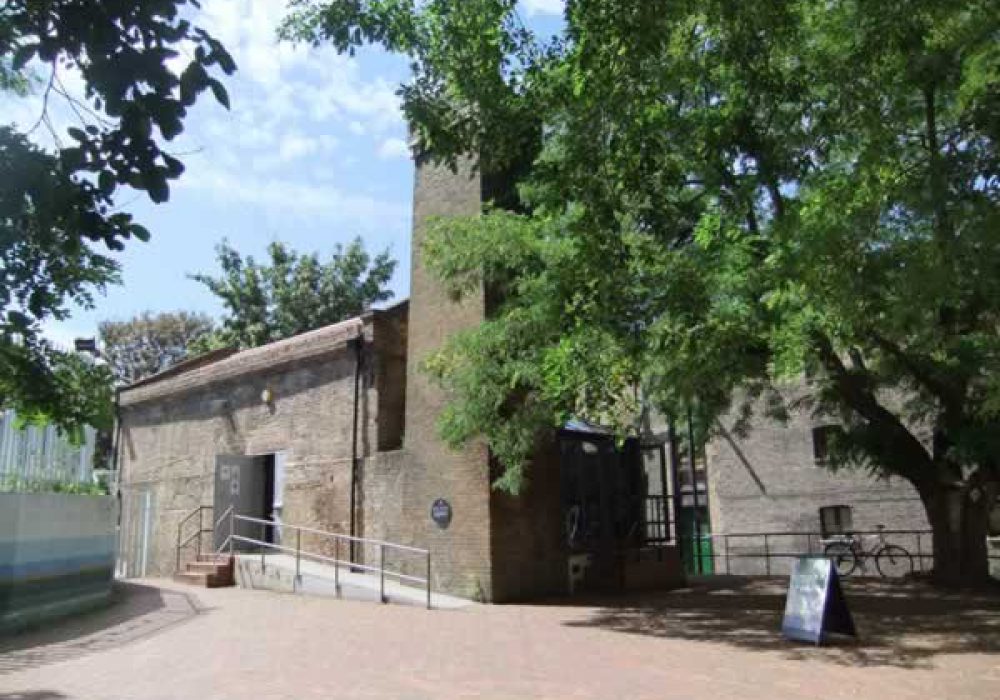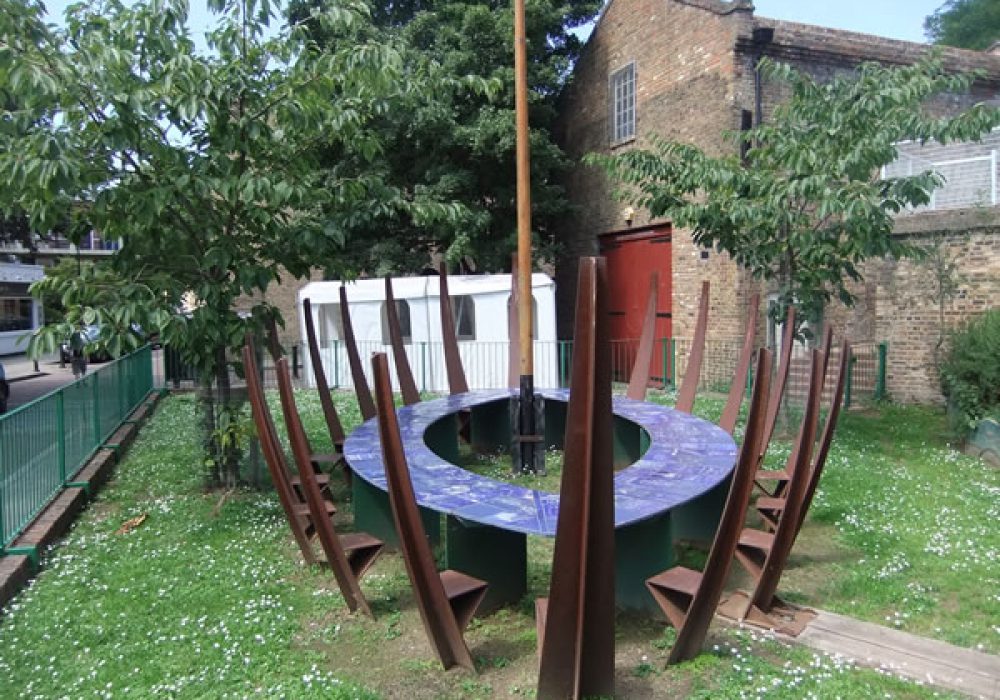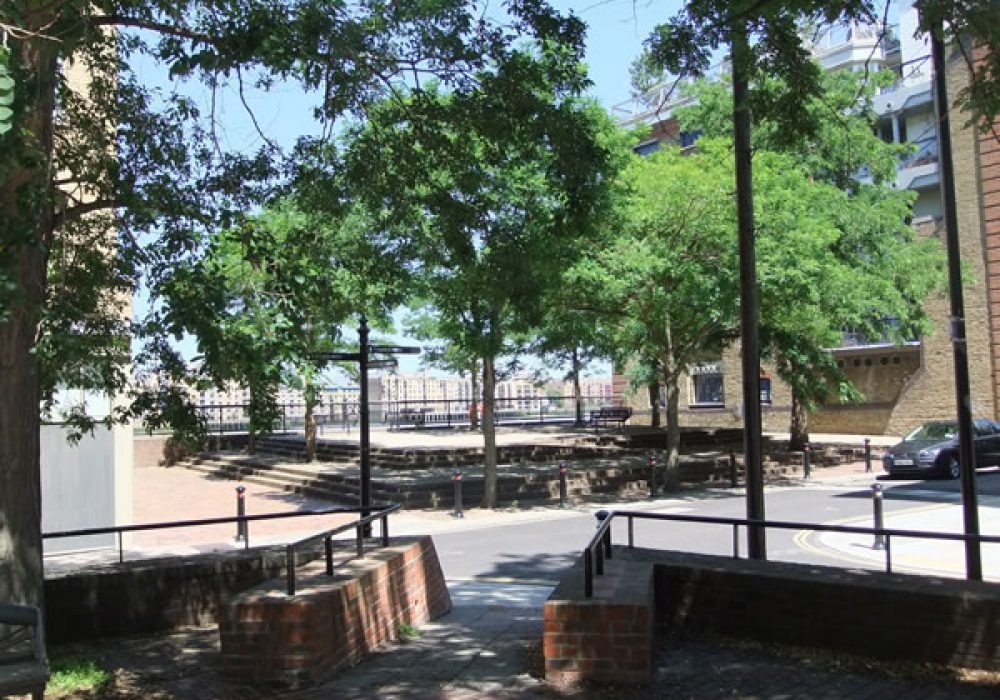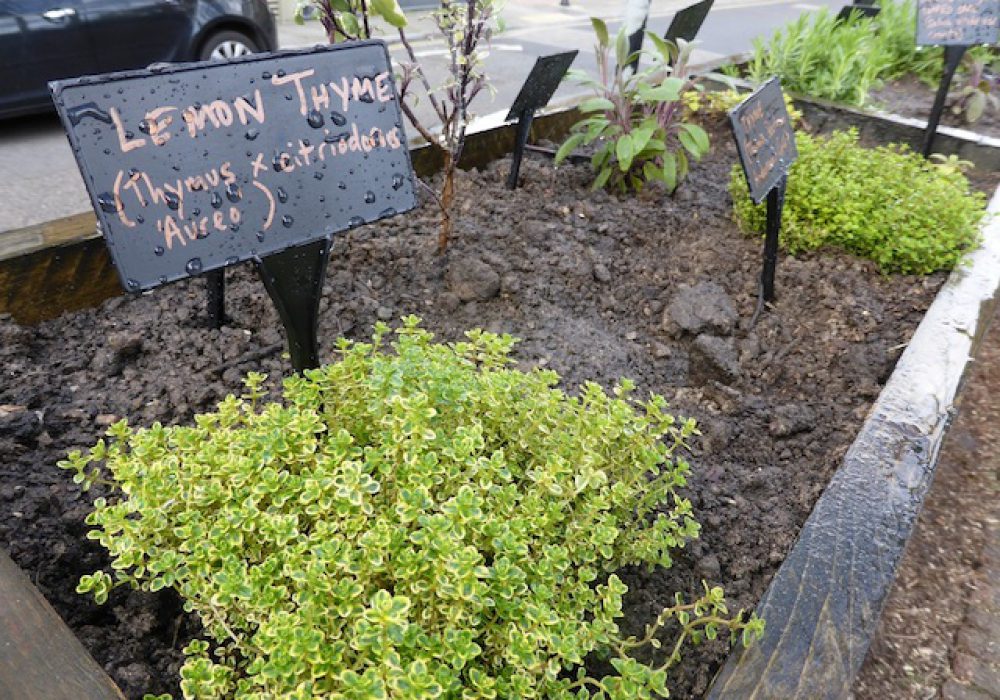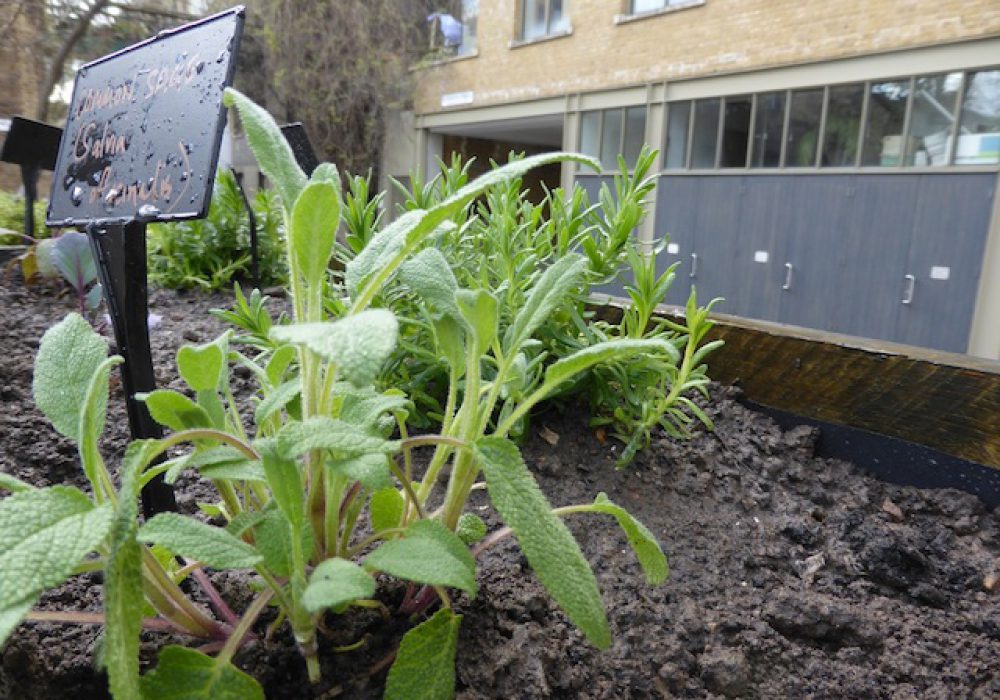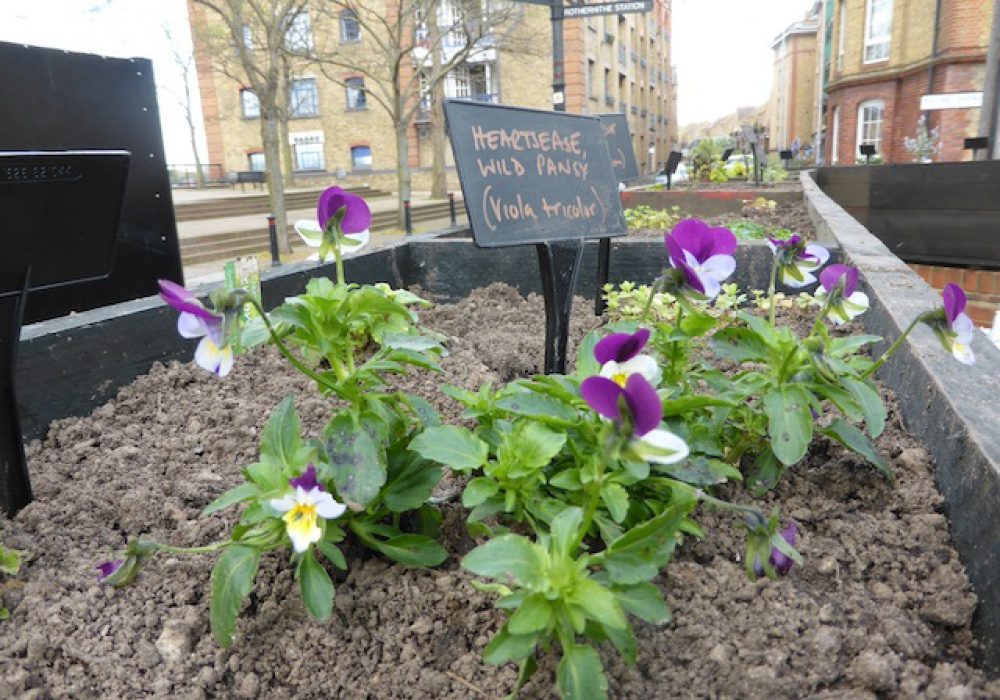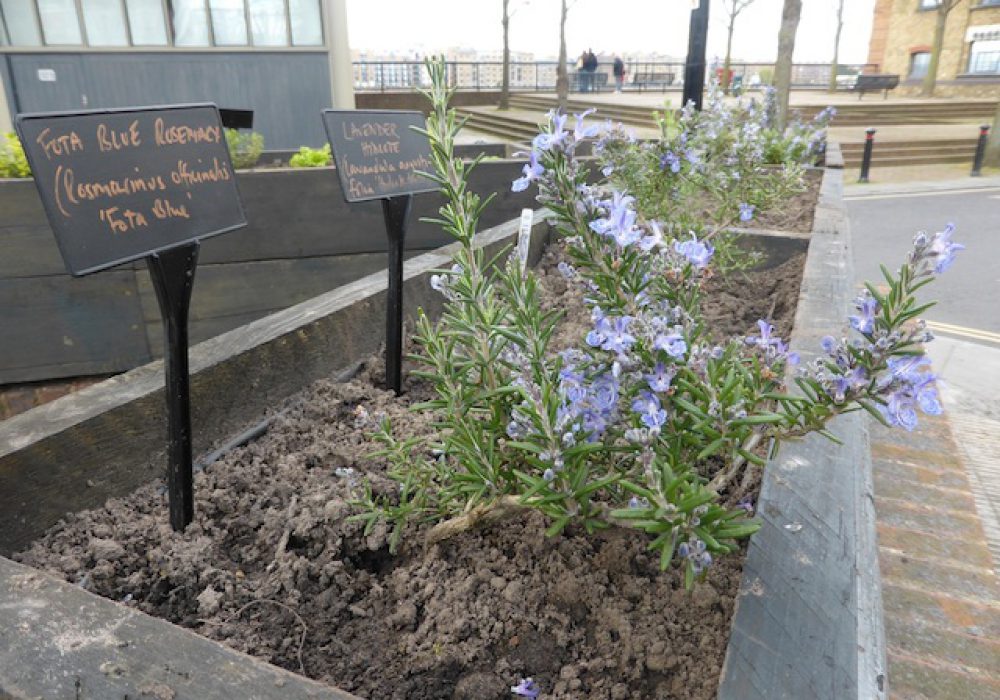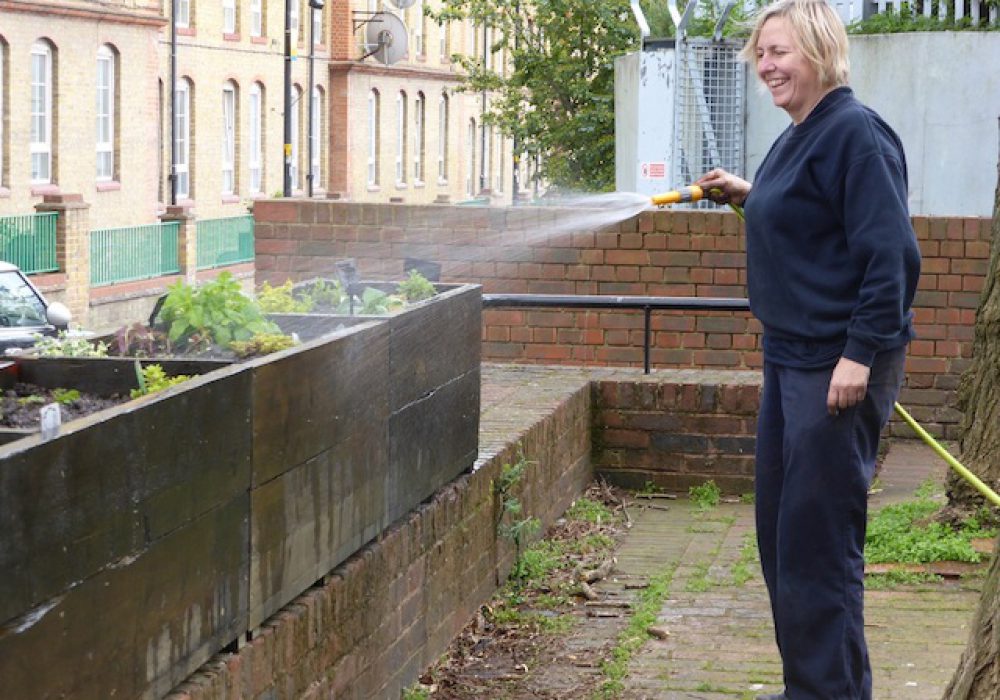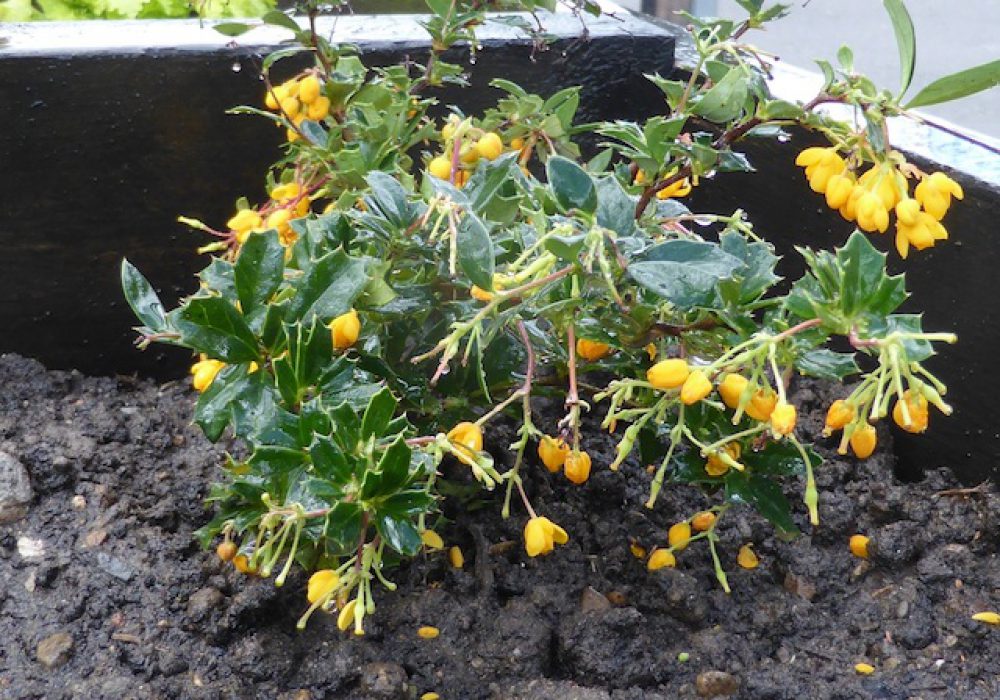Terrace and Gardens
The Museum is set in attractive landscaped grounds on three levels, circling Brunel’s original shaft, and overlooking a quiet and pretty section of the river.
On the south side, large double doors open onto a cobbled drive next to the enclosed lawn of the sheltered South Garden, stocked with shrubs and trees chosen by Brunel for his château in Watcombe, Devon.
Next to a Great Eastern grinding wheel, a picnic table, shaped like a ship, seats 20 people. The garden wall is the shaft, ringed with concrete fishes made by local children under the guidance of Liz Leyh. A ceramic design of the Miners’ Cage shows how the tunnel was built.
Surmounting the Tunnel Shaft is the Tunnel Shaft Garden, a potager garden with raised beds planted with herbs and fruits.
To the north and ringed by herb planters, a brick-paved piazza overlooks the river and serves as a shady terrace. Benches sit beneath shady false acacia trees, one of which is held together by huge stainless steel bolts and is popularly known as the Frankenstein tree. This side of the shaft is covered with a mural drawn from a painting by Marc Brunel, acquired with help from The Art Fund. The benches, made by local children, are shaped like Brunel Bridges:
Maidenhead Bridge
Still the flattest widest brick arch structure in the world. This bridge on the Great Western Railway was completed in 1838, when people said it would fall down.
Hungerford Suspension Bridge
Brunel’s first Thames crossing, completed in 1846. This elegant bridge took pedestrians over the river to Hungerford Market, now the site of Charing Cross station. The towers are gone, but Brunel’s piers still support Hawkshaw’s railway bridge. The chains now span the gorge at Clifton, where Brunel’s famous bridge was built, after his death, as his memorial.
Royal Albert Bridge
Brunel’s last bridge spans the River Tamar between Devon to Cornwall. The suspension chains are pulling the towers together, but the tubular arch above is pushing them apart. A very clever piece of engineering.
Community Herb Garden
Generous wooden planters are stocked with herbs for local people to pick and use. A garden project funded by United St Saviour’s and Rotherhithe Community Council’s project Cleaner, Greener, Safer.

